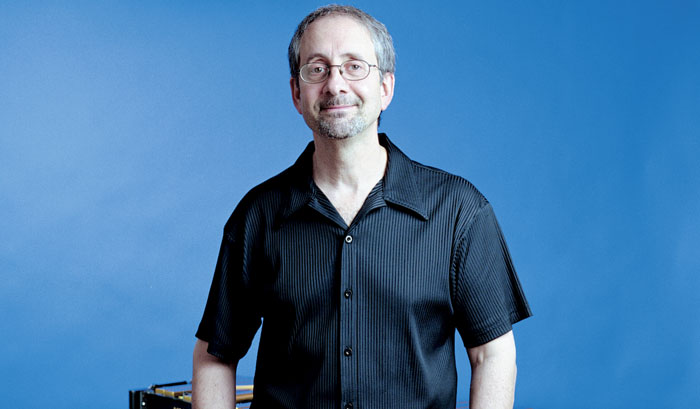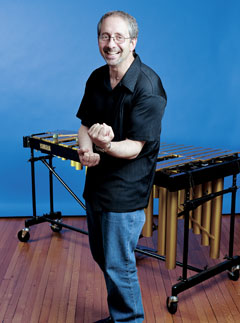


As one of the leading vibe and marimba players of his generation, Dave Samuels boasts a career distinguished by both critical and popular acclaim. In addition to his work with such jazz legends as baritone saxophonist Gerry Mulligan and jazz-pop icons Spyro Gyra, Samuels' own Caribbean Jazz Project won a Latin Jazz GRAMMY® for its 2002 album The Gathering. With a new Caribbean Jazz Project record, Birds of a Feather, out this summer, Samuels took a few minutes to tell us about his lifelong love affair with mallets.
How did you first gravitate toward vibraphone and marimba?
I started out on drums and also played a little bit of piano- and where those two instruments intersect is vibes and marimba. Once I started, I was always searching for new opportunities to play vibes. When I began working with Gerry Mulligan, he was looking for a percussionist who could do some vibe parts. I wasn't really interested in being a percussionist, but I was interested in playing vibes. So I started out playing hand percussion with a couple of notes on vibes, but when I finished working with him, I didn't play any percussion at all. In fact, we did a number of gigs where I was the only comping instrument.
In the jazz world, vibraphone is kind of like a violin. How many jazz violinists are out there? It's still a novelty.
How did you become involved with Spyro Gyra?
I first started recording with them in 1977 in Buffalo, New York. One of the guys who was producing said, "Hey, we're recording this local bar band, can you play on a couple of tunes for $50?" And it turned out to be exactly the kind of sound they were looking for-not just the instrument, but also the way I played and the interaction. So I ended up doing more stuff with them, including playing out live with them for 12 years.

How long have you been playing Yamaha instruments?
I signed up with Yamaha around 1984. What really convinced me was their commitment to making high-quality instruments, combined with their support of music education. Yamaha is constantly looking to make improvements in their instruments. In fact, when they were first thinking about making vibes, they came to me and some other players and asked for feedback, and they incorporated our comments into their designs. The Yamaha vibes project better than any other vibraphone out there. The sound is consistent and clear and in tune. And they make a frame that's portable, and even more importantly, quiet. Same with the marimbas. With some manufacturers, these instruments tend to have lots of rattles in them, but not Yamaha.
Which models do you use?
I record and play live with a Model 3910, 31/2-octave vibe, plus a 4900 41/2-octave marimba and a 5000 five-octave marimba. Yamaha's extended-range instruments use the same size bars as their standard ones, but they have longer frames. It's a real improvement over the old days, when each instrument had its own design. It used to be that the spacing between bars was completely different from a 41/3 to a 41/2 octave instrument, and if you went to a five-octave instrument it was different again. This way, it's much easier to move between instruments.
You probably know more than most recording engineers about getting a good sound from your instrument. Any tips?
In the studio, you never mic vibraphones from below-the sound comes out of the resonators. A lot of engineers see these big resonators and assume the sound's going down, but the resonators are, in fact, closed. For recording, the typical setup uses a pair of mics or a single stereo mic over the frame in the center of the instrument, high enough so the player doesn't hit the mic with the mallets. On a five-octave instrument you might use three or four mics to capture a nice, even sound. Onstage it's a little different-for a very loud environment, you can sometimes mic from below, because the resonators act as a kind of baffle. It's not the best quality of sound, but you might get a cleaner signal with less leakage if you're really close to other instruments.
What makes vibraphones and marimbas unique among jazz instruments
The vibraphone didn't even come into existence 'til 1927, so it showed up relatively late. And in the jazz world, when you're talking about one or two players that set a standard, it's kind of like violin-how many jazz violinists are out there? It's still a novelty.
























